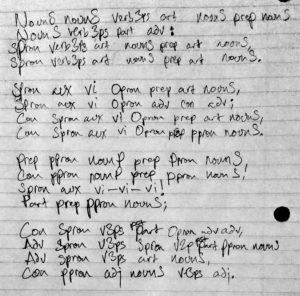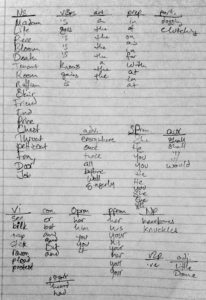Peep/Show reframes surveillance and voyeurism as a question of innocence and experience and plays with the hierarchy of power determined by subjectivity and the knowledge (or lack of knowledge) of when one is being watched or has been watched.
I’m still ultimately not sure how I want the interaction in the peepshow booth to work. On the one hand, the “email” paradigm might be the strongest – a misdirection away from the mirror towards another instance of surveillance, namely reading a stranger’s email, only to find out that that was a red herring and really it’s you who has been surveilled. Additionally, it could be strengthened by opening up a bunch of surveillance-y/voyeuristic content on the computer – closed-circuit camera feeds, lurid gossip websites, etc.
But that in some ways sacrifices one of the juicier psychological elements of the two-way mirror (which is really the star of the show), namely that it’s an instrument that in one mode reinforces ideas of privacy and aloneness-with-self, and in the other constitutes an absolute inversion of the same, invading the privacy of another while their sense of privacy is falsely reinforced. That the means of making the switch is the transition of a space from light (pride, security, obviousness) to darkness (shadows, hiding, scandal) is icing on the cake.
I’m therefore still trying to come up with something that makes use of the mirror in creating the situation that keeps the mark (perhaps soon to become the spy) engaged and performing for the delectation of the other. That’s what makes Ripley’s exhibit so good – the thing on the wall about rolling your tongue, in an oddity-museum space where such a suggestion makes complete sense, turns the participant’s attention directly to the mirror while blinding it to the real truth of what’s going on.
A similar setup using computers would be to have nothing on the wall, just a laptop open. You sit down and start reading, and then at some point (when your voyeur leaves and the next person comes in) a window pops up on your screen with a camera feed from their laptop (the camera light having of course somehow been disabled). It would even have the added benefit of being able to be staged in two totally separate spaces, thus reducing the possibility that the participant would “get” the trick before it was played on him or her.
But it loses something that way… there’s a viscerality to the mirror trick that I don’t want to discard in favor of the hyper-mediated electronic version (although, of course, that’s the situation in which you are most likely to encounter actual hidden surveillance). There’s something dreary about webcam footage, in contrast to the joy of the two-way mirror. And perhaps we’re already semiconsciously aware of the potential for surveillance inherent in electronic interactions, having tacitly bargained away our privacy in exchange for access to the world.
So the quest remains – find the right interaction. It needs to use the mirror; it needs to reinforce the idea that the mirror is a mirror, not a window; and it needs to encourage people to reveal something that they would not reveal if they knew someone was watching.



